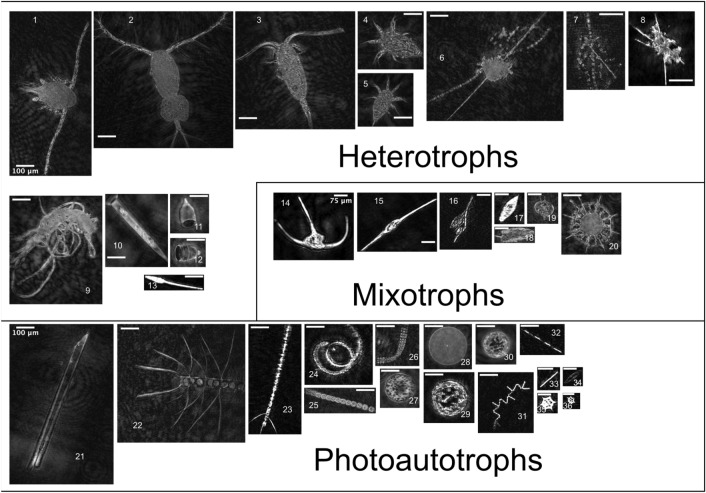Figure 4.
A collection of eukaryotic taxa observed on the Newfoundland Shelf. Groups are broadly divided into trophic level with respective scale bars, labelled at image 1, 14, and 21. Heterotrophs included adult copepods (1–3), larval nauplii (4–5), the saprophytic phylum Labyrinthulomycetes (6–8), the Amoebozoa Platyamoeba (9), tintinnids (10–12), and appendicularians (13). Mixotrophic dinoflagellates (14–19) included several genera of Tripos (14–16), with Tripos fusus (15) and Tripos lineatum (16), Gyrodinium (17), Prorocentrum (18), and Protoperidinium (19). The heterotrophic radiolarian Acantharia (20) commonly bears photosynthetic symbionts, creating mixotrophic nutrition41. The photosynthetic autotrophs included diatoms (21–35), and the silicoflagellate genera Dictyocha (35–36). The diatom genera included Proboscia (21), Chaetoceros (22–24), plus taxonomically unresolved chain-forming (25–26) and centric groups (27–30), Thalassionema (31), Pseudo-nitzschia (32), rod-shaped groups (33), and Nitzschia (34). To highlight additional data-driven benefits of holography, partially focused images (e.g., 21 and 23) produced from our methods can be refocused from raw holograms using, for example, an oblique reconstruction to recover obscured features outside the plane perpendicular to the optical axis42.

